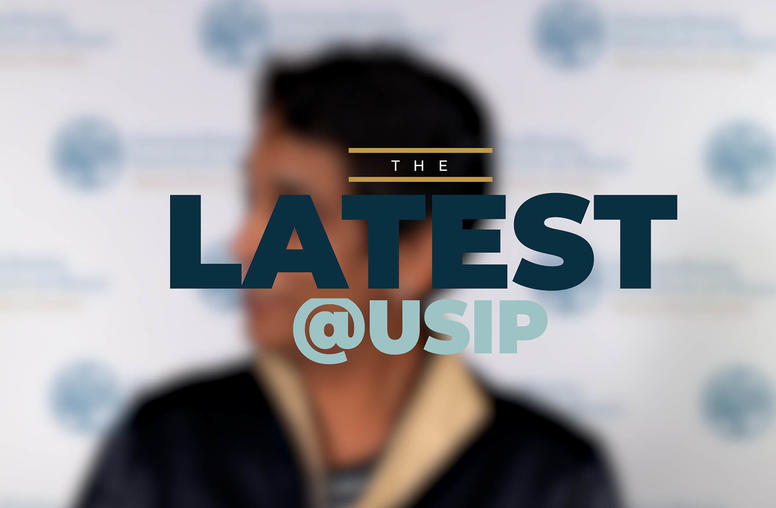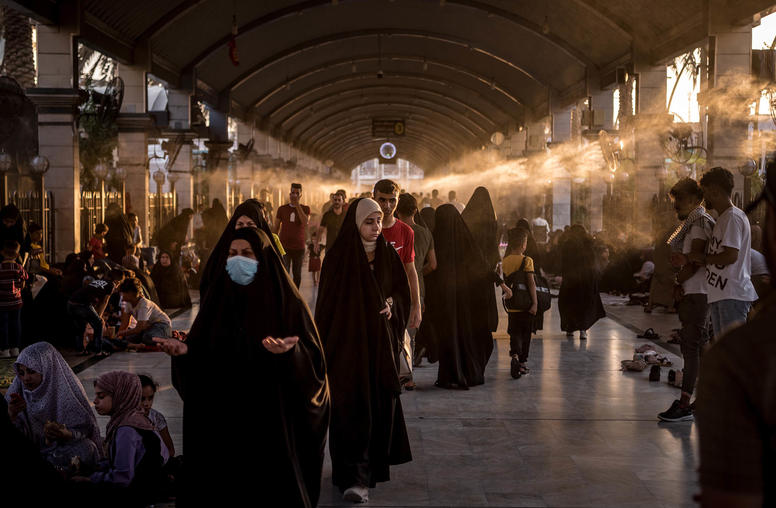The spread of the coronavirus has forced mediators and their international partners to halt the face-to-face meetings typically used in building peace. Feeling a sense of urgency, practitioners have scrambled to upgrade their use of alternatives—notably online consultations, dialogues and workshops. Digital tools are being quickly developed that could provide opportunities for peacebuilding unimaginable just a couple of years ago. How can we ensure that this development, now accelerated by the COVID pandemic, remains viable in practice?

People in conflict zones have been using email, text messages and social media to communicate for some time. Social media is often credited for playing a powerful role in the popular “Arab Spring” movements of 2011. In the 2019 crisis in Sudan, Sudanese mediators (or, as conflict resolution specialists call them, “insider mediators”) used WhatsApp and Zoom to coordinate their work when they could not meet. Now, digital products are being developed that promise to change the work of peacebuilding, perhaps unpredictably. These include systems for online consultations and dialogue, tools for digital activism, data analytics for conflict prevention and early warning—and possibly one day augmented reality tools that could shape new, online environments for negotiations.
Steps Toward Online Mediation
But how far can we actually conduct peace negotiations remotely? We all recall the stories of peacemaking through seemingly miraculous face-to-face meetings between enemies. Perhaps the iconic example is President Jimmy Carter’s achievement of the 1978 Camp David peace accords through 12 days of meetings and walks in the woods with Israeli Prime Minister Menachem Begin and Egyptian President Anwar Sadat.
Without that direct, personal contact, the space for doubt, mistrust and fear of betrayal grows exponentially—especially in cultures where personal relationships mean everything. Pre-COVID19 mediators depended heavily on their presence and personal relationships, and often the secrecy of their discussions, to persuade parties in a conflict to agree to a negotiating process. Now we must generate that same commitment from a distance and without the full use of all five senses to help us read between the lines, express empathy or reassure an insecure interlocutor. Early experiences indicate that three areas will need to be carefully rethought:
- Trust and relationship building: Mediation can succeed only if the participants trust the process and each other enough to accept the risks inherent in negotiations. To build the required trust with partners, mediators must establish personal relationships with them. Mediators try to use a personal charisma to build that trust (a skill that is not inborn but must be built through experience). That process, like other tools of mediation, cannot be simply transferred from in-person meetings to digital meeting spaces. It's critical to ask parties to a conflict what will make them trust a digital process in the absence of face-to-face formats. Relationships and trust are built through consistency, reliability and transparency in communication—principles we will now need to honor in digital ways. Mediators will need to reflect on how much of their personal lives they are ready to share across the initial digital divide, perhaps sharing online pictures of where they are, their home offices and the digital challenges they face.
- Dialogue: In an online conversation, how do we create the conditions for a deep dialogue among conflicting parties? We will need to solve difficulties ranging from privacy worries, to awkward silences, to the particular mental exhaustion that many of us are noticing from strings of online meetings stretching through the workday. Our new task of “digital peace process design” will require us to rethink even our ideas about time and space. The fact that we can send an email in a few seconds or hold an hour-long Zoom conference at any time of day does not mean that people will become faster at processing accelerated flows of information. On the contrary, they may need more time because of competing humanitarian and health priorities. For some participants in a peace process the COVID-enforced shift to digital communications may raise internal complications. Imagine, for example, an armed group, perhaps in a rural territory where only a few members have solid digital access to the outside world. Those points of contact may be overwhelmed by an exponential increase in digital communication, while the group they represent may still rely heavily on in-person meetings for their decision-making.
- Safe Space: Peace negotiations inevitably ask participants to consider compromises in their established positions—a political and even personal risk that often can be hazarded only in the safe space of a private discussion. In Zoom meetings I have attended in recent weeks, facilitators have sought to create that safe space by asking participants to promise that no unseen person is listening in the room and that they are not recording the session. But these safety measures cannot be enforced online as reliably as in face-to-face meetings. We may need to achieve more without “safe spaces,” perhaps by cultivating “brave spaces” in which people are empowered to speak more openly about how they are experiencing conflicts and what they need to resolve it. New ground rules for online meetings will need to be developed that recognize the vulnerability of all participants online. Here again we will need to ask our local partners what would make participants feel a little safer in the meeting and what should be consequences when these ground rules are broken. In terms of technology it is important to get global experts thinking about creating safe spaces online and how the tech companies can support peacebuilding.
Digital peacebuilding offers exciting opportunities but requires that we reevaluate how we interact. We are bound to make mistakes as we explore this new terrain of peacebuilding, and we should not be discouraged by our initial setbacks. Most importantly we need to remember that we are not trying to replace human interaction with technology, but rather find a balance between the two. Those of us who mediate peace processes must recalibrate our dependence on travel into conflict zones for a direct presence. Among the many changes we face will be to explore concepts of a lighter footprint and a truer reliance on locally-led peace processes.



